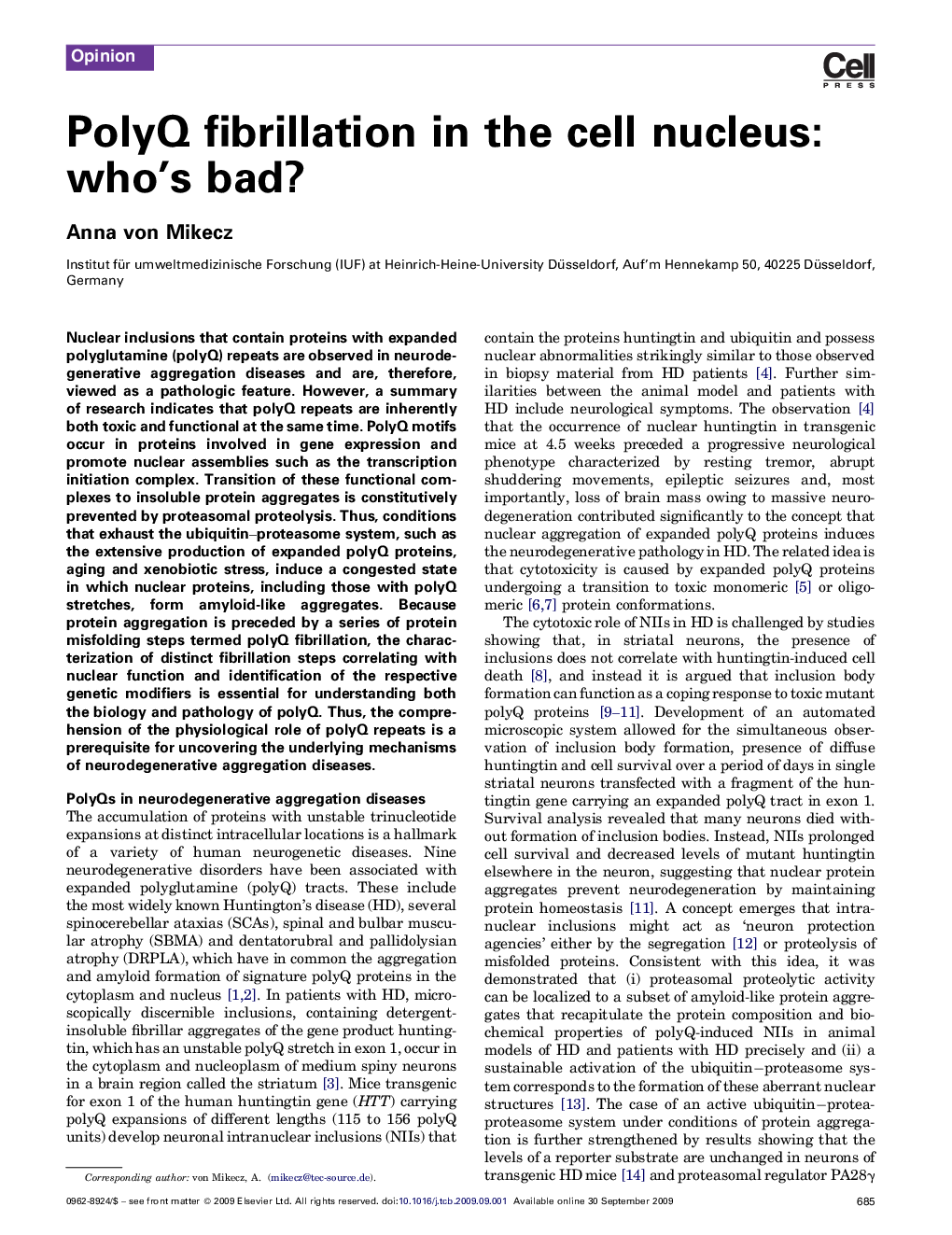| Article ID | Journal | Published Year | Pages | File Type |
|---|---|---|---|---|
| 2205012 | Trends in Cell Biology | 2009 | 7 Pages |
Nuclear inclusions that contain proteins with expanded polyglutamine (polyQ) repeats are observed in neurodegenerative aggregation diseases and are, therefore, viewed as a pathologic feature. However, a summary of research indicates that polyQ repeats are inherently both toxic and functional at the same time. PolyQ motifs occur in proteins involved in gene expression and promote nuclear assemblies such as the transcription initiation complex. Transition of these functional complexes to insoluble protein aggregates is constitutively prevented by proteasomal proteolysis. Thus, conditions that exhaust the ubiquitin–proteasome system, such as the extensive production of expanded polyQ proteins, aging and xenobiotic stress, induce a congested state in which nuclear proteins, including those with polyQ stretches, form amyloid-like aggregates. Because protein aggregation is preceded by a series of protein misfolding steps termed polyQ fibrillation, the characterization of distinct fibrillation steps correlating with nuclear function and identification of the respective genetic modifiers is essential for understanding both the biology and pathology of polyQ. Thus, the comprehension of the physiological role of polyQ repeats is a prerequisite for uncovering the underlying mechanisms of neurodegenerative aggregation diseases.
